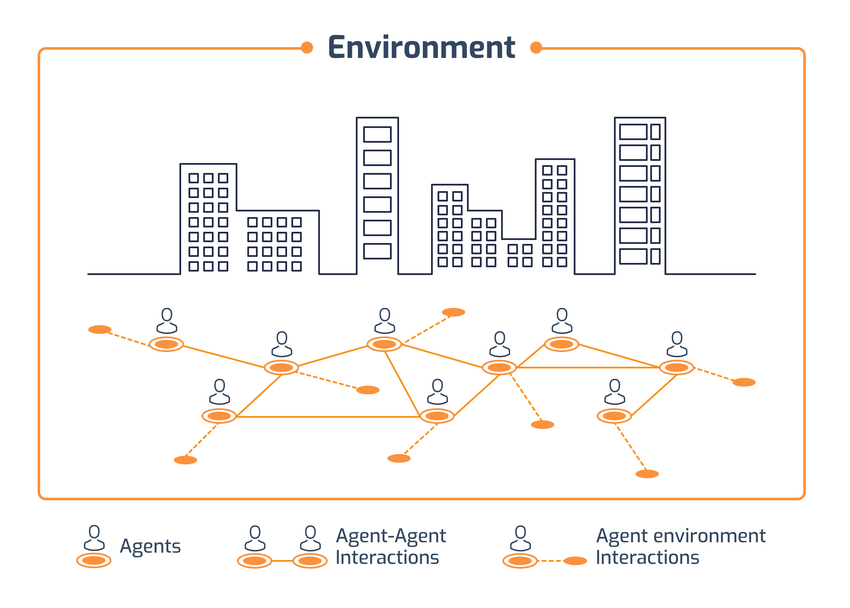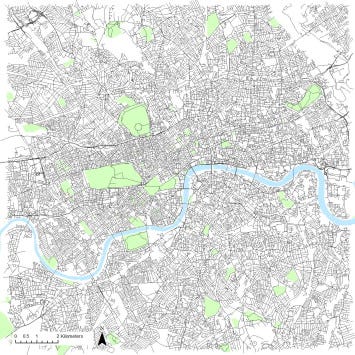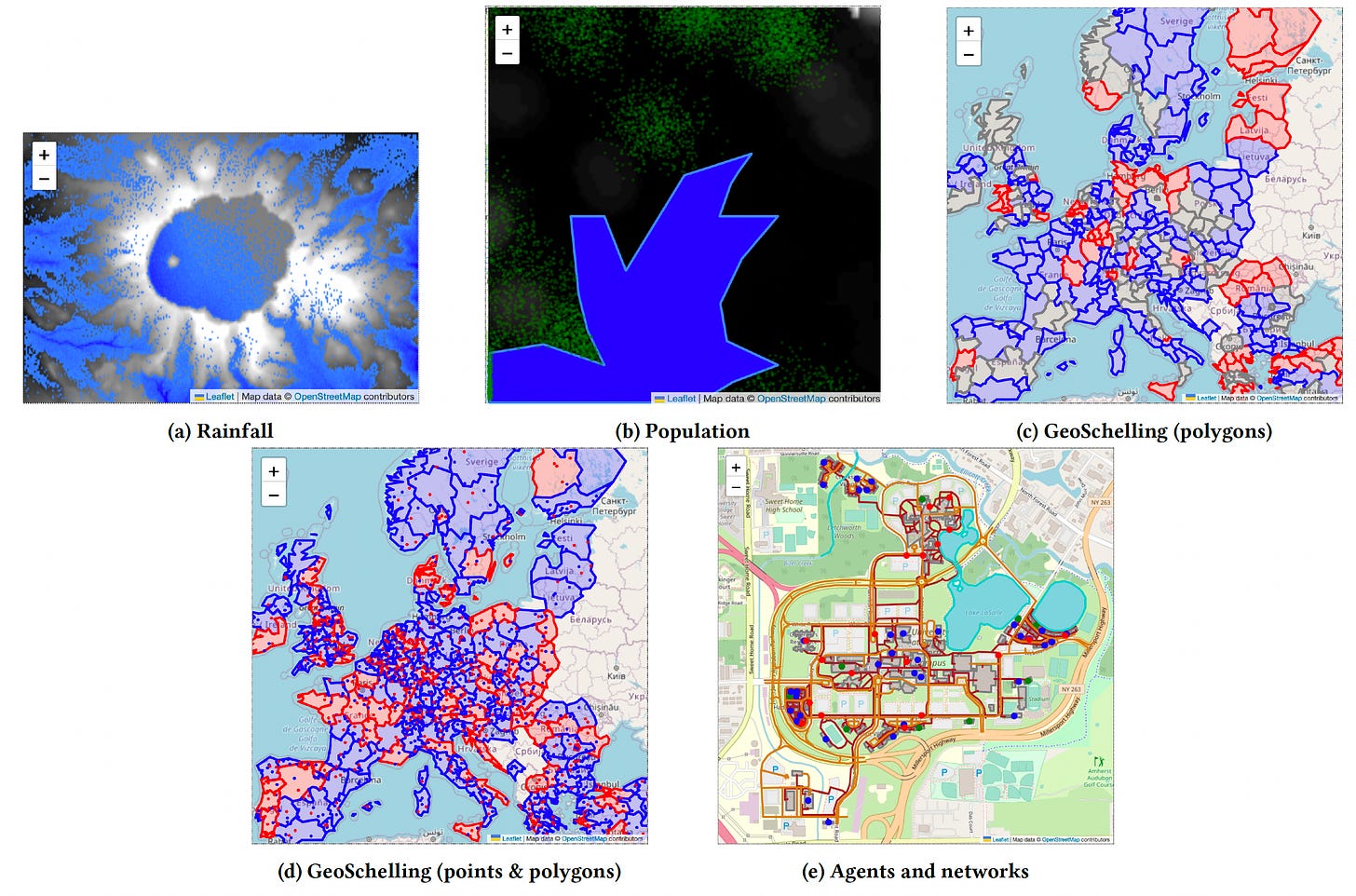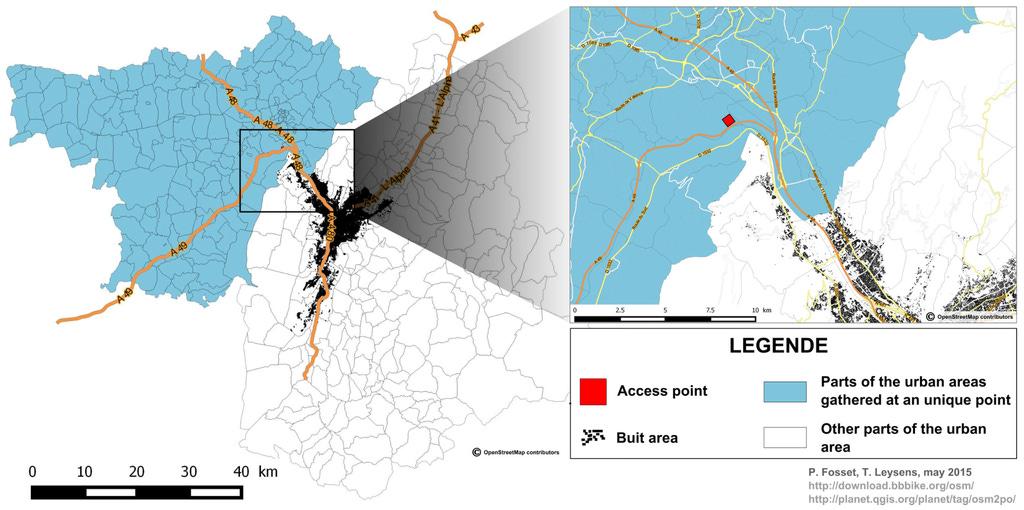Welcome to our LHP AI Digital Twin (AIDT) email, in today’s journey, we will continue to delve into the world of AIDTs, explore the power of synthetic data and see how these tools can help build the smart cities of the future, in which you will see:
The Importance of Data: We'll delve into why data is critical for creating effective AIDTs and the challenges in collecting real-world data.
The Role of Synthetic Data: Discover how synthetic data, generated through computational models, can overcome the challenges of data collection and provide a rich, detailed picture of city life.
Agent-Based Modeling (ABM) in Action: We'll take a closer look at ABM, a powerful tool for generating synthetic data, and see how it's used to simulate everything from human behaviour to traffic patterns.
Case Study - GaMiroD: We'll examine a real-world example of ABM in action, with the GaMiroD model, which simulates daily mobility in the city of Grenoble, France.
Introduction
As we are in a fast-paced world, the cities we live in are becoming more intelligent than ever before. Imagine a city that can optimise resource allocation, improve service delivery, enhance urban planning and even predict and mitigate the effects of disasters. This is not a vision of the future - it's happening now, thanks to the power of AIDT.
The AIDT is like a virtual clone of our city, brought to life with AI and data analytics. It reflects the hustle and bustle of city life, simulating everything from human behaviour to traffic patterns. With AIDT, city planners and managers can test scenarios, predict outcomes, and make data-driven decisions.
❗But to create an effective AIDT, we need data - and lots of it. We need data that is detailed, accurate and reflects the complexity of urban life. However, collecting such data is not easy. Privacy issues, logistical barriers and the complexity of the urban environment can all make data collection a real challenge.
This is where synthetic data comes in handy, which can be generated through computational models such as agent-based modelling (ABM) can fill the gaps left by traditional data collection methods. By modelling human behaviour, traffic patterns, environment and other urban dynamics, we can create a rich, detailed picture of urban life that goes beyond what real-world data can provide.
The need for synthetic data
While real-world data provides valuable insights into urban dynamics, it often does not provide a full picture of human behaviour and urban life. This is where synthetic data comes in, providing a powerful solution to the complex patterns that shape our cities.
Synthetic data is artificially created information that reflects real-world data, but does not contain any actual personal information. This means that we can generate vast amounts of data that accurately reflect human behaviour, traffic patterns and other urban dynamics without violating the privacy of individuals. We can even simulate the impact of new policies or infrastructure changes before implementation, helping predict potential problems and optimise outcomes.
❓But how exactly do we generate synthetic data? In the next section, we will introduce you the agent-based modelling (ABM), a powerful computational modelling approach that allows us to generate such synthetic data.
Agent-Based Modelling (ABM)
As we delve deeper into the world of synthetic data, we encounter a powerful tool that brings our AIDT to life: Agent-Based Modelling (ABM). ABM is a computational modelling approach that simulates the actions and interactions of individual agents, allowing us to assess their collective impact on the system as a whole.

As Fig.1 These agents can represent a variety of entities in the bustling digital landscape of a smart city. They can be individuals going about their daily work, vehicles travelling on the city's roads, buildings housing businesses and homes, or any other element/Environmental interacting in the city. Each agent operates according to a set of rules that mimic the behaviour and decision-making processes of their real-world counterparts.
But the real power of ABM lies in its ability to capture complex, emergent behaviour. When these individual agents interact, they can produce patterns and dynamics that are greater than the sum of their parts. This mirrors the way real-world phenomena appear in our cities, from traffic congestion to neighbourhood alienation.
For example, given the morning rush hour traffic congestion, a single agent can be considered as the driver of a car: each agent must decide when to leave home to go to work, and by driving on the road, its interaction with other agents (i.e. cars) is what causes traffic congestion to form (e.g. Manley et al., 2014). As shown in Fig.2 this simulated environment represents a realistic replica of the real-world London road network. In total, there are 62,230 road sections in this simulation environment.

By harnessing the power of ABM, we can create synthetic data that not only represent individual behaviour but also captures the complex interactions and emergent phenomena that shape our cities. This allows us to create a more realistic and dynamic AIDT, providing a powerful tool for understanding and managing urban life.
ABM platforms
Creating an ABM requires a powerful and flexible platform that can handle the complexity of simulating a smart city. Thankfully, there are several platforms that have been specifically designed for this purpose and they are all free and open-source ABM platforms, and good for urban, traffic and human behaviour simulations
NetLogo [4]: Developed by the Center for Connected Learning and Computer-Based Modeling, NetLogo is a multi-agent programmable modelling environment. It's used by thousands of students, researchers, and teachers worldwide for a wide range of subjects and research areas.
"An agent-based model of the Earth system & climate change" [3] - This interesting model uses NetLogo to simulate the Earth system and climate change.
MASON: Short for Multi-Agent Simulator of Networks, it's designed to be a high-performance, discrete-event, multi-agent simulation library. And the GeoMASON is an extension to MASON which add GIS capabilities, including reading and writing standard formats, embodying agents in GIS environments, and visualisation.
Mesa: Mesa is a modular framework for building, analysing and visualising agent-based models. It's written in Python, making it accessible to a wide range of users, and it's particularly well-suited for models involving complex spatial interactions. There is also an extension of Mesa and geographic information: Mesa-Geo, which we can use it simulate city maps/road/traffic quickly and conveniently.
GAMA: is a Java-based platform that is specifically designed for geospatial simulation. It provides a high-level modelling language, a comprehensive set of modelling primitives, and a user-friendly interface, making it an ideal tool for simulating smart cities. In the next section, we'll delve into a real-world example of ABM in action with the GaMiroD model (based on GAMA), which simulates daily mobility in the city of Grenoble, France.
Case Study - GaMiroD
Exploring Intra-Urban Accessibility and Impacts of Pollution Policies with an Agent-Based Simulation Platform: GaMiroD [5] - Modelling the daily activities within an urban environment with resources and simulating the emerging traffic and the impact on air quality.
As shown in Fig.5, the GaMiroD model builds on the concept of 'situated agents', autonomous entities defined by their location in a given environment, their bodies (their own representatives), the survival or gratification functions that drive their behaviour, and their ability to perceive and explore their environment and modify it according to their limited skills. These agents, generated from real data to represent the population under study, were assigned a list of daily activities, as well as a fixed home and workplace. In a given simulation, their goal was to organise, schedule and perform their activities, taking into account the constraints imposed by their environment, including those emerging from the behaviour of other agents.
As GAMA allows for running large-scale simulations and supports native GIS. With regard to frameworks like Mason, GAMA is based on a stakeholder-oriented language that facilitates communication between project participants with very similar performances. That's why GaMiroD's development team chose to base their development on the GAMA platform.
Firstly, the model relies on a spatio-temporal database that details the location and opening and closing times of urban resources, defined here as the range of services, shops, businesses and public institutions that individuals move around to fulfil their daily activities. This database is an important input to the model as it forms the context in which the agent operates.
They then generate synthetic populations, generating types of populations based on their socio-economic and demographic characteristics and daily activities. The data is then processed and the results validated to localise the agents, as shown in Fig.6, ensuring that populations from external areas are taken into account and that they are allocated as agents to a limited number of local 'access points' located along the main axes of the urban system. Finally, a chronological schedule was constructed, where each activity has a start date and an end date as shown in Fig.7.
The GaMiroD model provides a comprehensive simulation of everyday traffic in cities, offering valuable insights into the complex dynamics of the urban environment. By modelling the actions and interactions of individual agents, the model can predict the impact of various factors on the overall urban dynamics. This includes the impact of individual daily mobility on traffic emissions and air quality as shown in Fig.8, the simulated impact of the introduction of a Low Emission Zone (LEZ) in the Grenoble city centre on automobile traffic. a key concern for urban planners and policy makers.
The synthetic data generated through agent-based models (ABM) such as GaMiroD is a valuable resource. Through such simulations, we can obtain a large amount of data, including human activity, traffic patterns and even carbon emission and pollution detection data.
Conclusion
In the era of smart cities, the role of data is paramount. However, the challenge of obtaining real-world data that accurately reflects human activity is significant. This is where synthetic data, generated through Agent-Based Models (ABMs), comes into play. ABMs, like the GaMiroD model, offer a powerful tool to simulate and understand the complex dynamics of urban environments.
As we continue to delve into the world of AIDT and synthetic data, we look forward to seeing how these tools will continue to shape the future of our smart cities. The journey is just beginning, and the possibilities are endless. Stay tuned for more insights in our upcoming newsletters!
References
Manley, E., Cheng, T., Penn, A. and Emmonds, A., 2014. A framework for simulating large-scale complex urban traffic dynamics through hybrid agent-based modelling. Computers, Environment and Urban Systems, 44, pp.27-36.
Ramadiah, A., Galbiati, M. and Soramäki, K., 2021. Agent-based simulation of central bank digital currencies. Available at SSRN 3959759.
Y. Baghoussi, P. J. R. M. Campos and R. J. F. Rossetti, "An agent-based model of the Earth system & climate change," 2016 IEEE International Smart Cities Conference (ISC2), Trento, 2016, pp. 1-6.
Wilensky, U. (1999). NetLogo. http://ccl.northwestern.edu/netlogo/. Center for Connected Learning and Computer-Based Modeling, Northwestern University, Evanston, IL.
Fosset, P., Andre-Poyaud, I., Banos, A., Beck, E., Chardonnel, S., Conesa, A., Lang, C., Leysens, T., Marilleau, N., Piombini, A. and Thévenin, T., 2016. Exploring intra-urban accessibility and impacts of pollution policies with an agent-based simulation platform: GaMiroD. Systems, 4(1), p.5.









